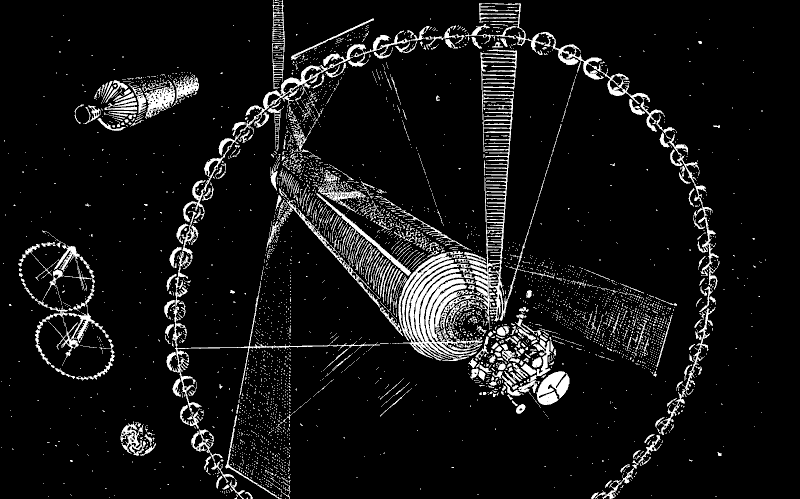
Tuesday, December 09, 2008
BIG ENGINEERING 28 MASS PRODUCING WORLDS

One of my earlier articles was about building an O'Neill space settlement. What do you need to do so?
Well specifically you need a Moon base with bulldozers or something equivalent to dig ore up, an accelerator/catapult to put ore into orbit, a very large sack in orbit catch it with, a large mirror to smelt the ore & a lot of people to fabricate it into such a cylinder.
All but the last of these are structures that once created can be used indefinitely (mostly more indefinitely than on Earth because there is no weather in space to wear things out) & indeed are fairly easily scalable. Scalability & cinsequent economies of scale are what make most big engineering projects so attractive. That is to say productivity can be increased continuously simply by making stuff bigger or utilising it more fully. If a big bulldozer with 1 driver working for 5 year can dig up enough mass for 1 cylinder then 10 much bigger machines can supply 20 times as much. They can be repaired by 1 man on site but actually driven remotely by people in Los Angeles or Glasgow, or if those 2 turn out to have an outdated electricity supply & intermittent blackouts because of the Luddites, Shenzen or Seoul. The Moon being a big place & with a low gravity which allows digging as deep as you want. The problem with workers on site is why it has been proposed that the first thing to be built would be a much smaller Bernal Sphere for the workers to live in.
So if it takes 5 years to make the first cylinder, say about 30 years from now, that cylinder would provide housing for the crew to build others, indeed the replication of such habitats is an intrinsic part of the concept.
Self-replication
Self-replication is an optional attribute, but many think it the ultimate goal because it allows a much more rapid increase in colonies, while eliminating costs to and dependence on Earth. It could be argued that the establishment of such a colony would be Earth's first act of self-replication. Intermediate goals include colonies that expect only information from Earth (science, engineering, entertainment, etc.) and colonies that just require periodic supply of light weight objects, such as integrated circuits, medicines, genetic material and perhaps some tools
So lets assume it takes 5 years from the first shovelful to finish the first cylinder in 2038. Lets also make the much more conservative assumption that productivity can increase by 10% a year (conservative because that is what the entire Chinese economy is now doing so it is clearly very possible to do it for one particular edge of the envelope industry).
Now lets apply some compound growth to that. Doing compound growth calculations in your head is actually relatively easy if you know the trick. The trick is the Rule of 70 (also known as the rule of 69, which is most accurate & the rule of 72 which is easiest to use if you are calculating in fractions rather than decimals.
What it says is that to achieve a doubling under compound growth you only actually need approximately 72 percentage points of growth. For example the cube root of 2 is 1.189. 18.9% X 4 = 75.6%. It won't give you an exact figure but is a first approximation capable of being used in discussing any project.
So taking that the doubling time of habitat production, assumed at 1/5th per year, is 7 years. By 2045 we are producing 2 every 5 years, by 2054 it would be 1 a year & by the end of the century (actually 2096) we would be at 64 new O'Neill colonies a year. At about 560 km surface area in each cylinder (30 km long with 3 km radius) this is 36,000 km of new territory, all with the best possible climate & fertility & now animal life we didn't introduce. That is the size of Taiwan or 1/6th larger than Belguim.
Again this can be ensured by X-Prizes - awarding a prize not just for building the first one but either smaller prizes for subsequent ones or prizes foe each increase in production above the previous maximum each year.
Mark Twain advised "Buy land, they've stopped making it" & indeed it has been a very good investment ever since. Also a very good cause of wars. That can be a temporary condition if we let it.